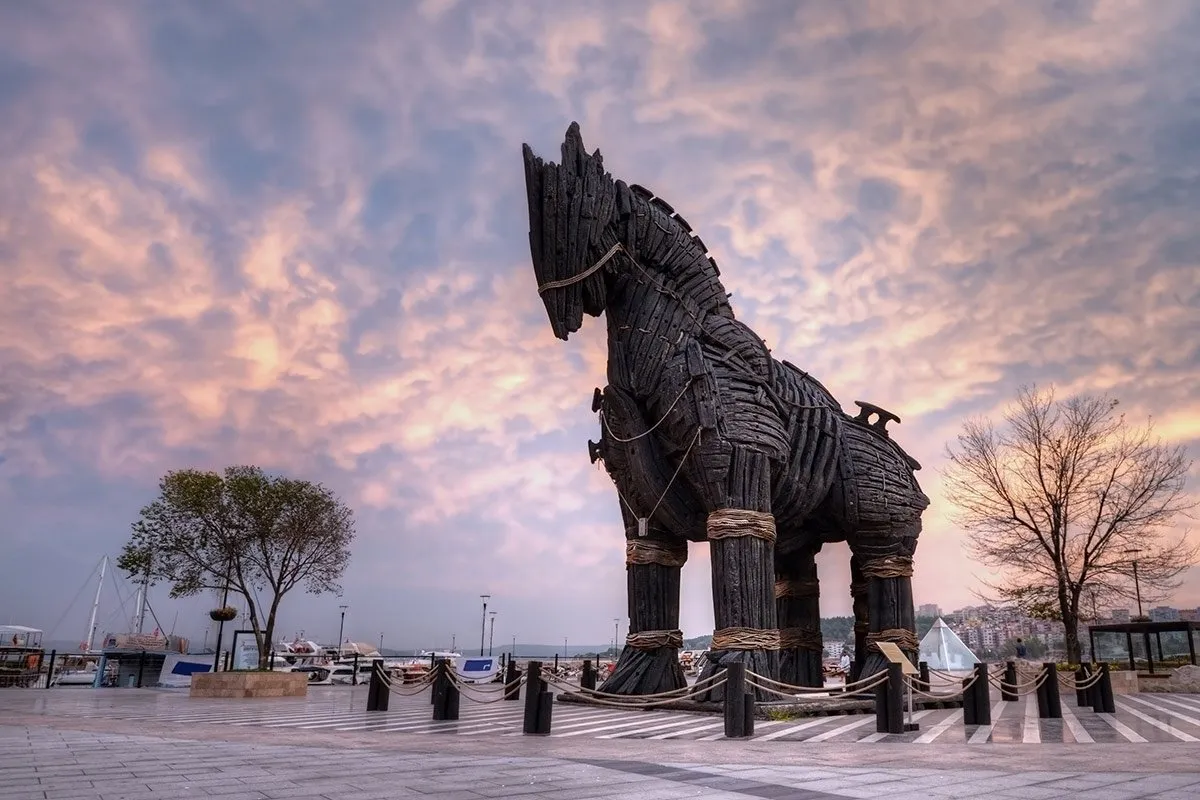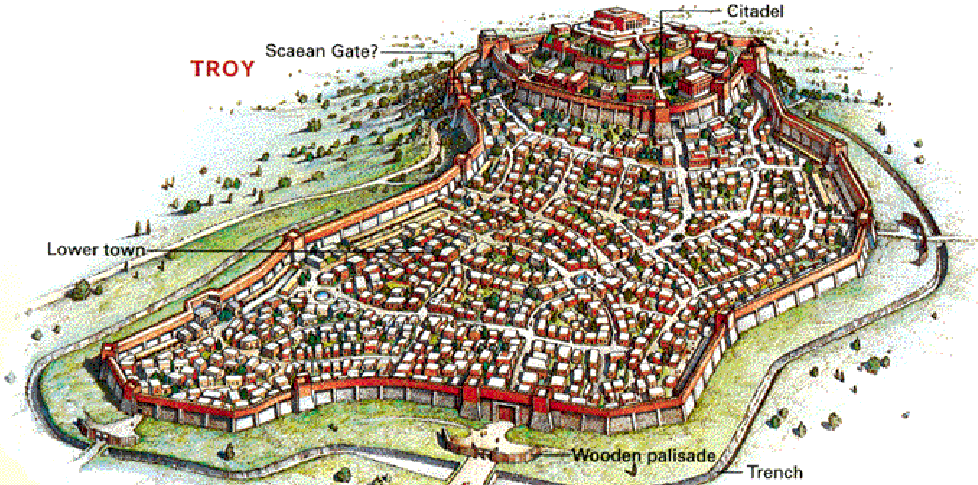1700 before Christ, traders from many parts of the world met in northwestern Asia Minor at the strait between the Aegean Sea and the Marmara Sea. Here at the Hellespont, two important trade routes cross, to land the north-south connection between the Arab world and Europe, and to water the way from the Mediterranean to the Black Sea. Merchants carry gold from Egypt, fine spices from the Arabic countries, tin from central Asia, copper from Cyprus and valuable forging from Mycenae, the most powerful city in early Greece. Troy is the transshipment point for all these goods.
Troy was built around 3000 before Christ on the hill of Hisarlik. At that time a small settlement was built, its city wall was made of unhewn natural stone. Inside the fortification there are long houses, most of which consist of only one room and were built of clay and wood plaits.
The people who live here speak the dialect that is customary in this region, Nuvan. This language is related to Hittite, which enables the Trojans to communicate with the Hittites, the strongest powers in Asia Minor.
The Trojans are skilled craftsmen, they make vessels from clay and stone and discover the advantages of metalworking at an early stage. Tools and weapons made of copper and bronze give you a decisive advantage over attackers.
But despite the geographically advantageous location on the Hellespont and the outstanding craftsmanship of its inhabitants, the rise of the prosperous city comes to an abrupt end. A conflagration destroys the early gate and razes it to the ground within a very short time. But it shouldn't be long before the hill awakens to new life.
Already 2500 years before Christ, Troy 2, as the archaeologists will later call it, is in full bloom again. Even bigger and more powerful than its predecessor, the citadel now rises above the strait. Together with the lower town, the newly built city of Troy covers an area of nine hectares. The fortress alone occupies a tenth of it.
Representative multi-room houses adorn the castle courtyard. They serve the inhabitants as cult and meeting places. A particularly large building could indicate that there was already a palace in Troy at that time. However, nothing of the kind has survived.
The Trojans do not seem to have attached much importance to leaving written evidence of their existence to posterity. Not a single inscribed clay tablet, no inscriptions in buildings, no seal and no symbols provide information about life in the small Asian city-state.


 Part 2
Part 2 

Unesco - World-Archeology
Live Science - Ancient History
About History - Encyclopedia Britannica
Images: 1, 2


